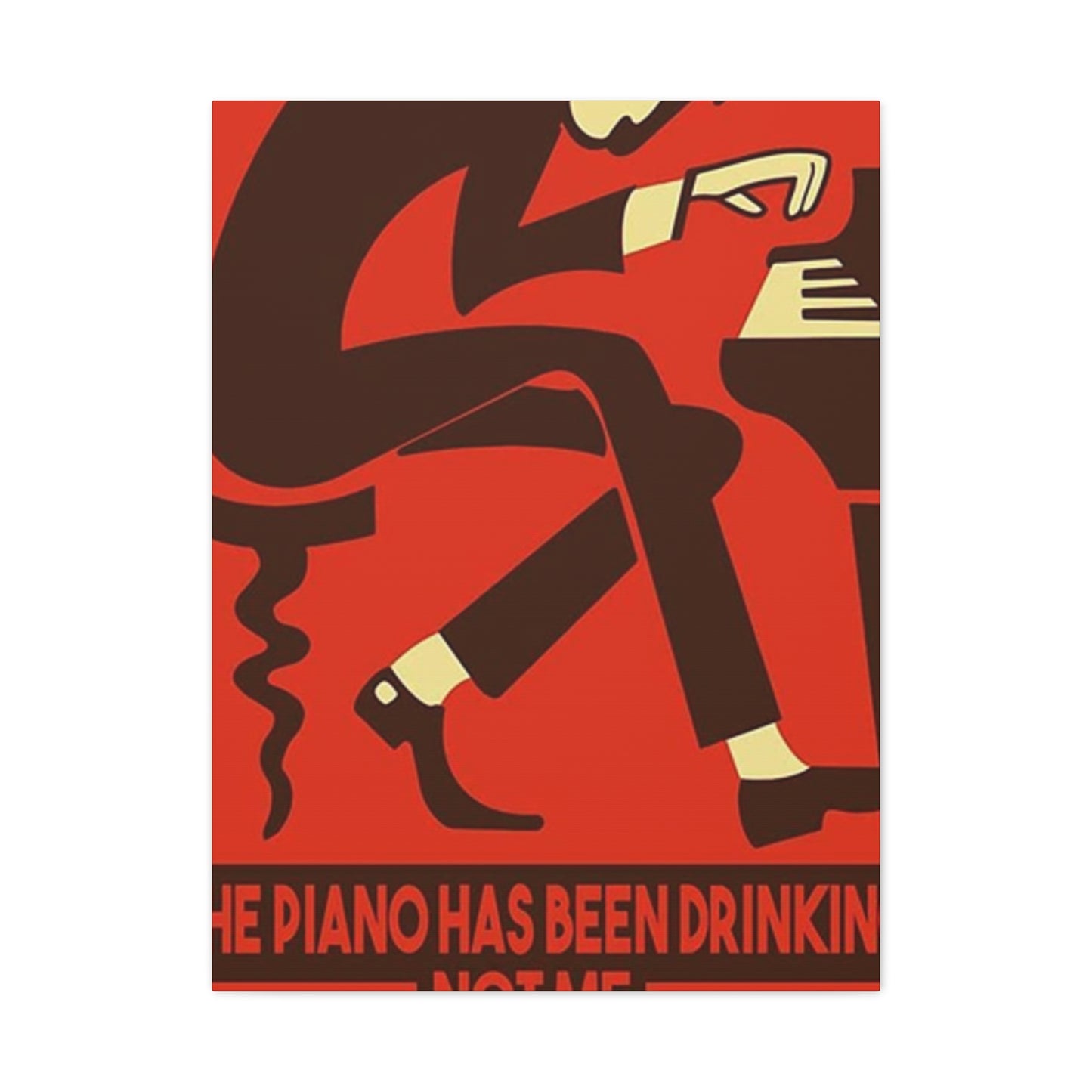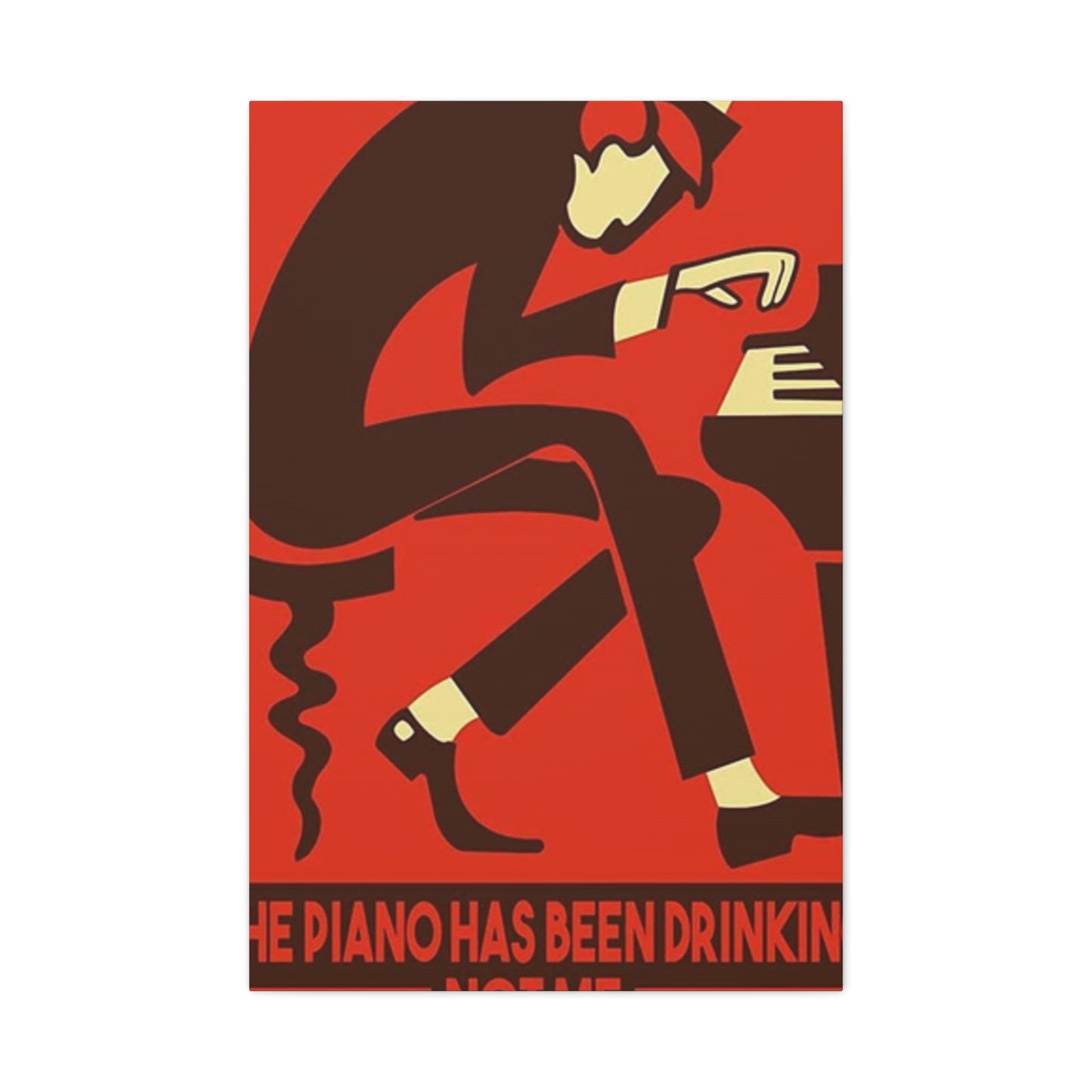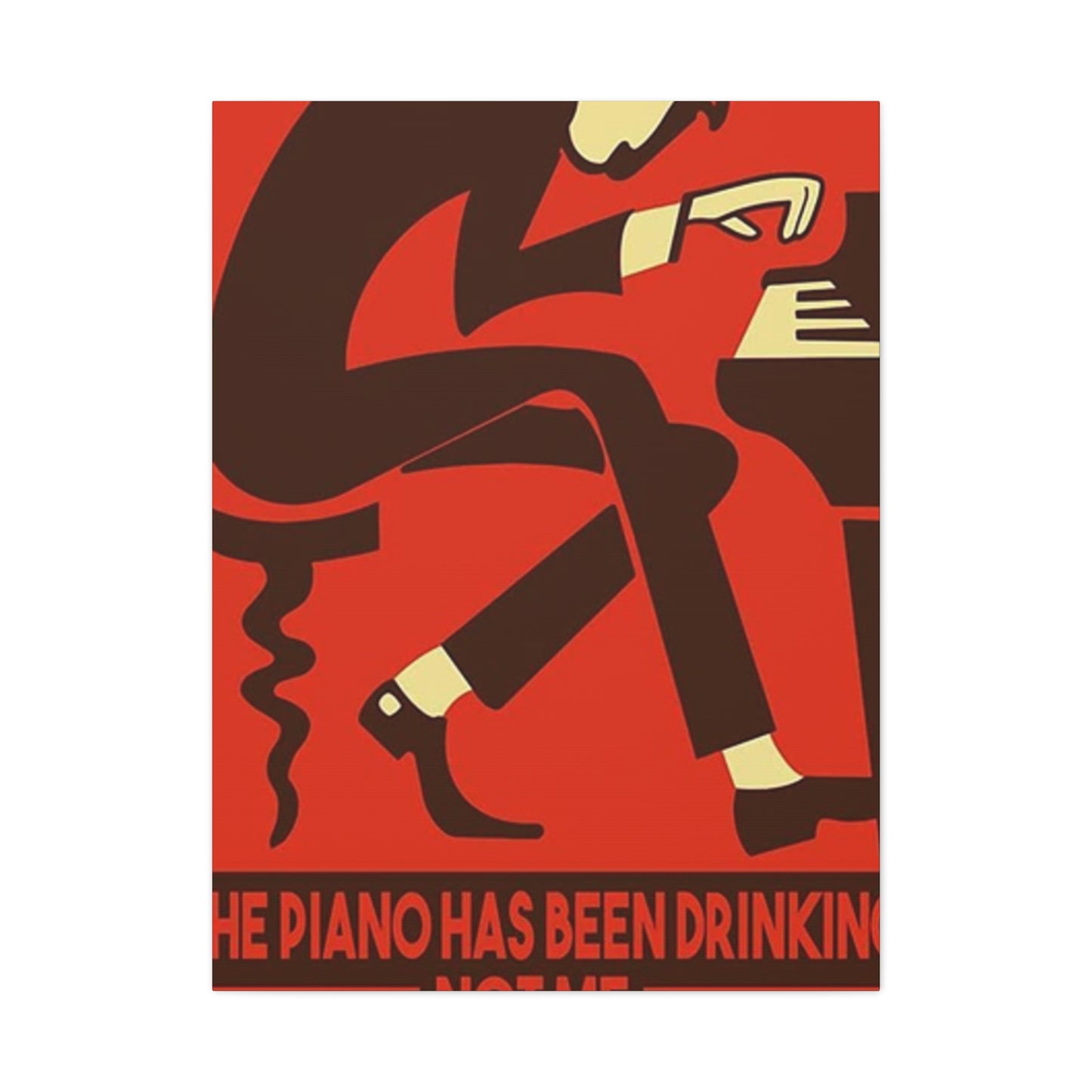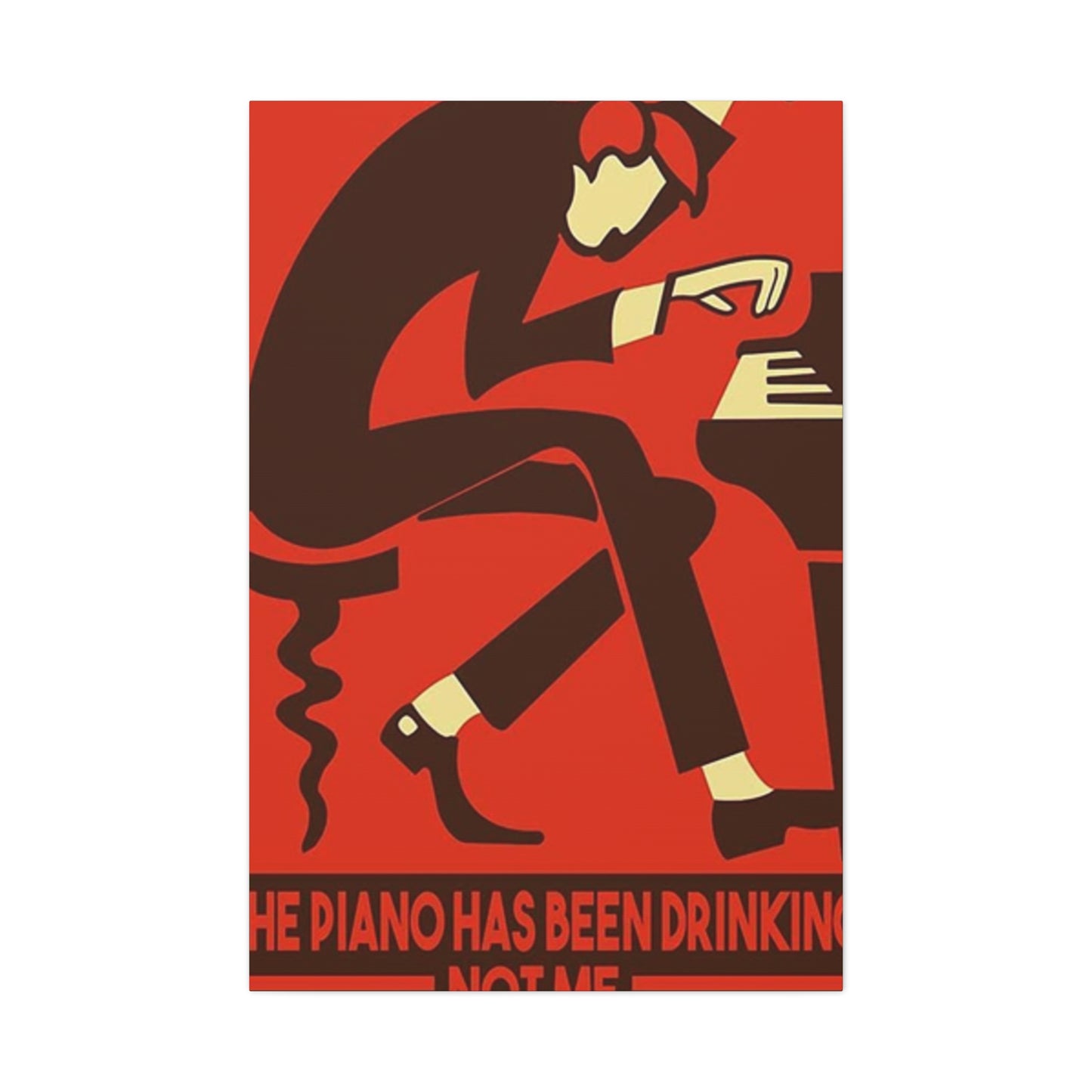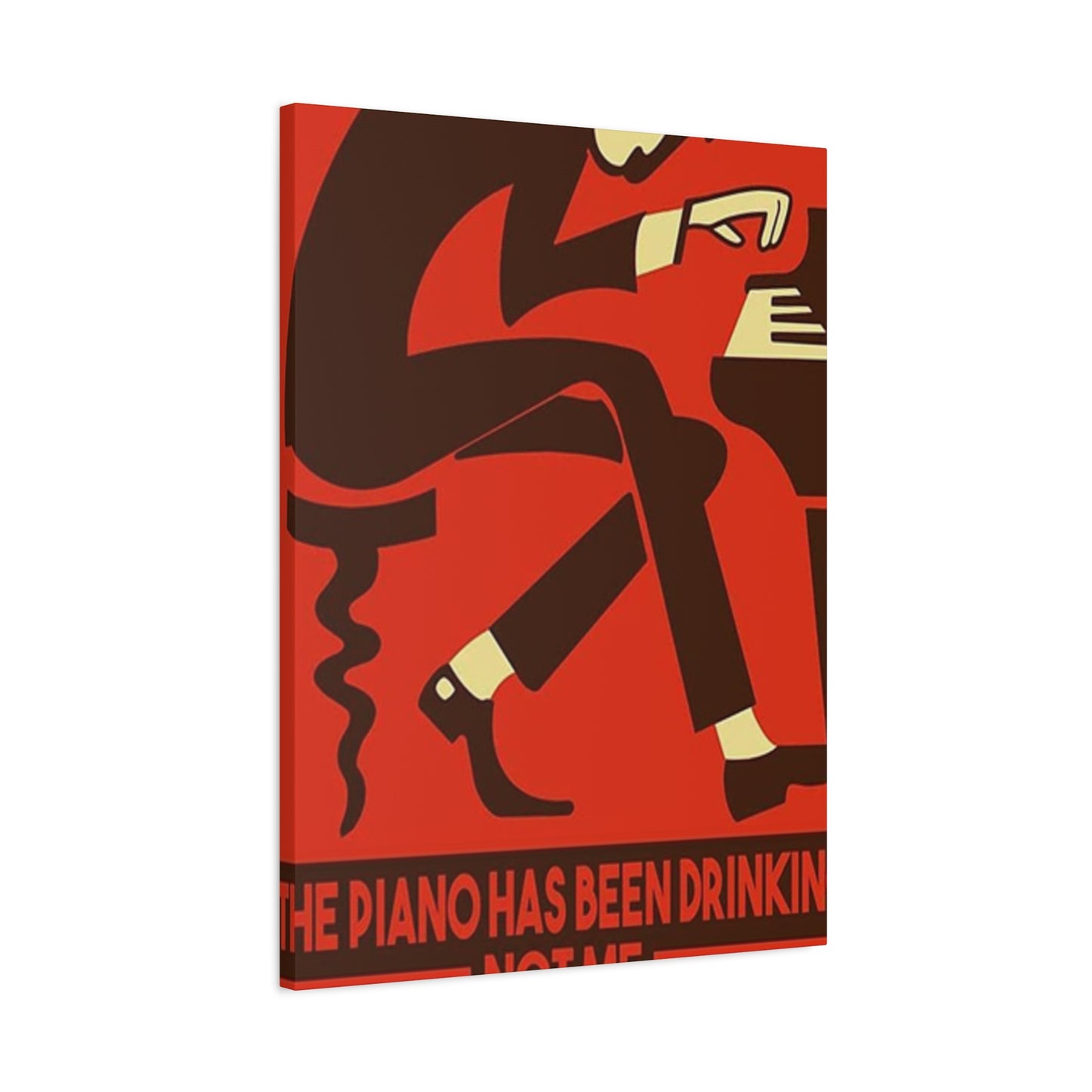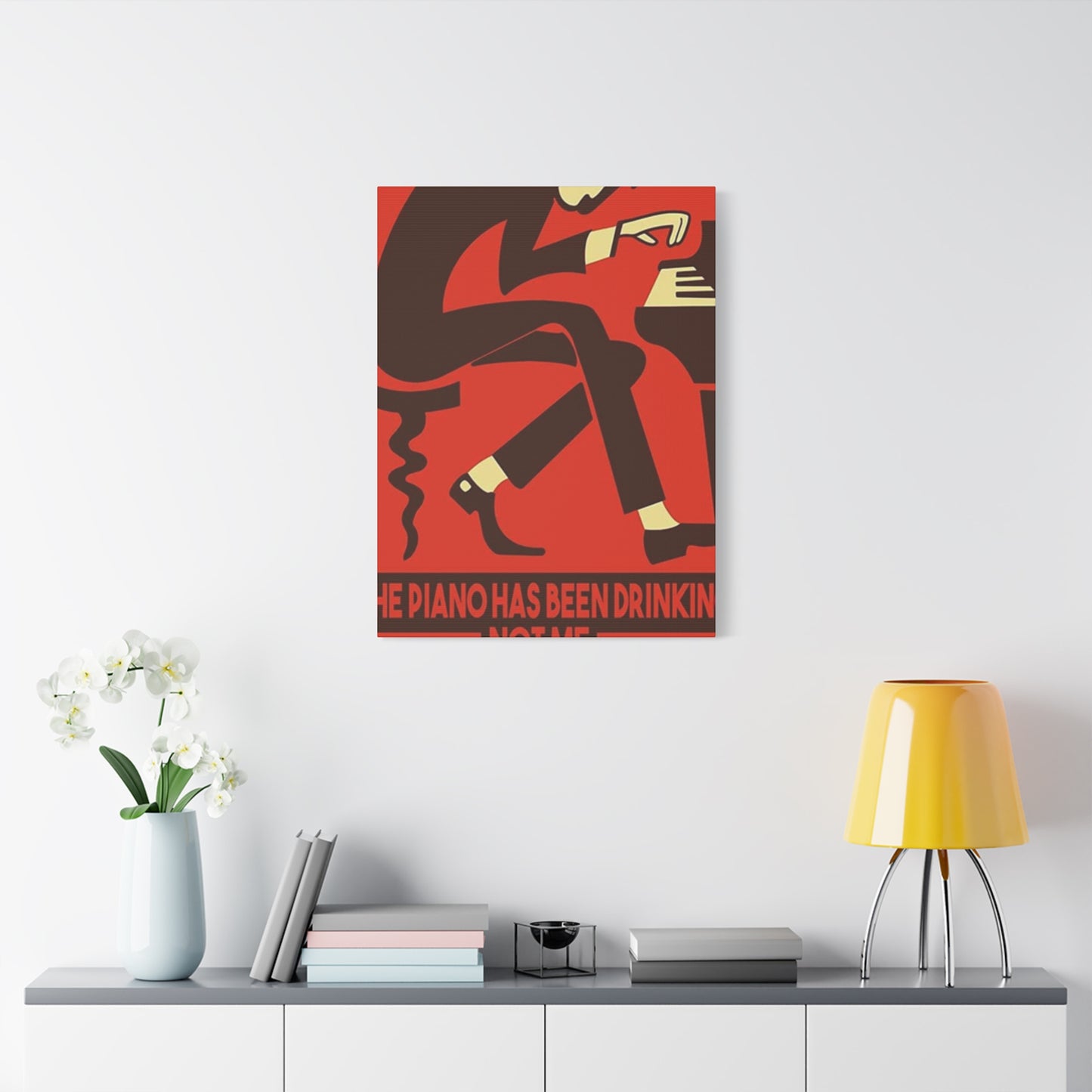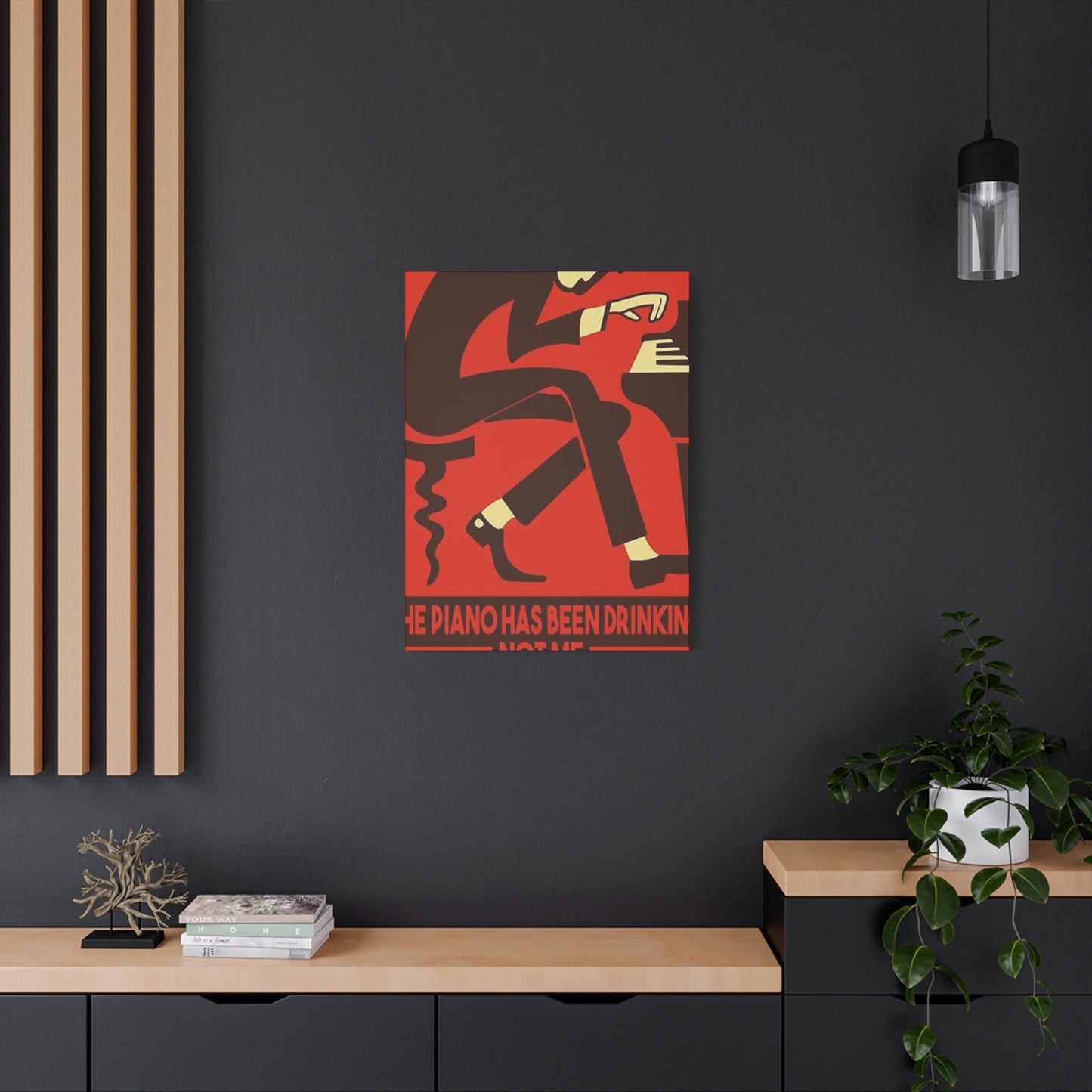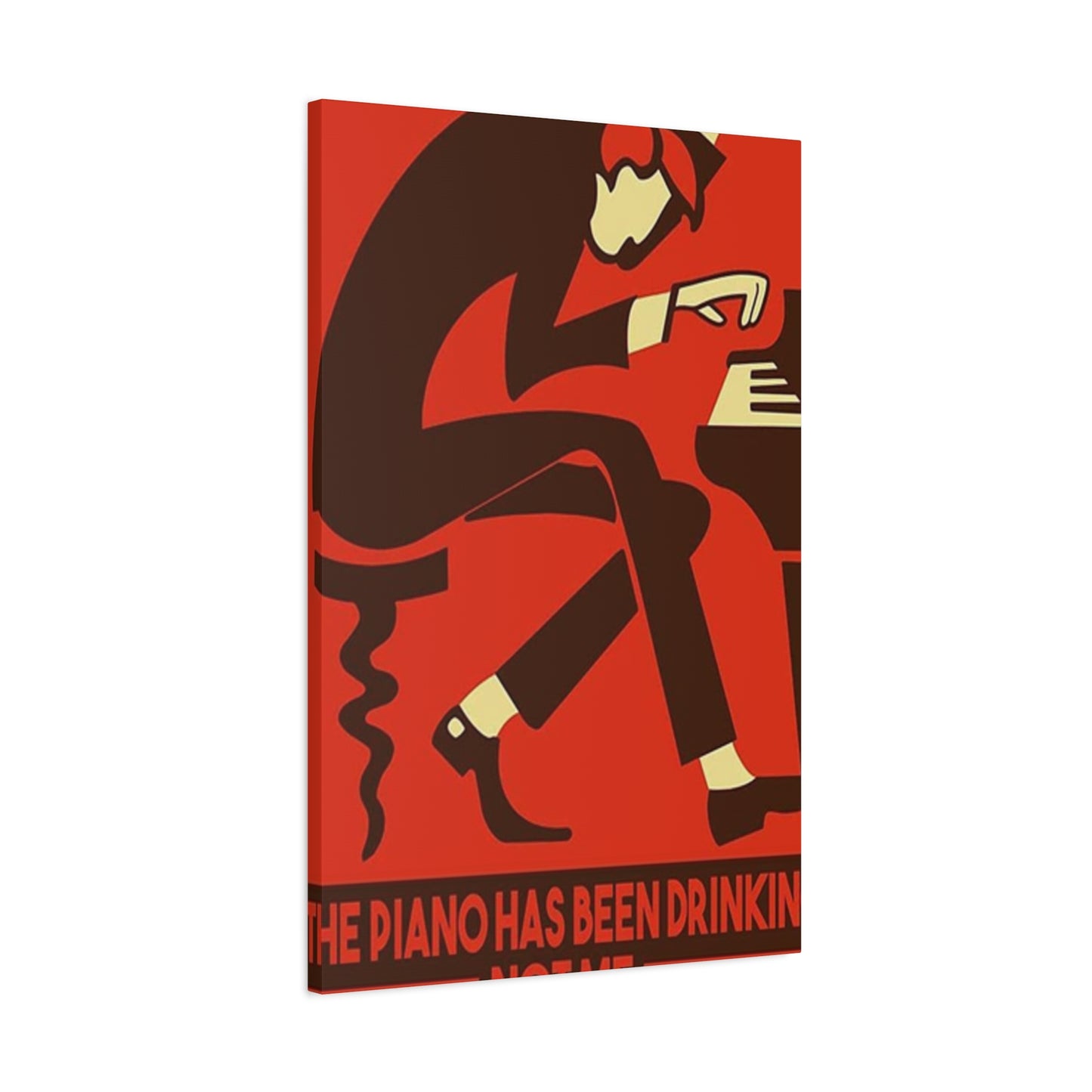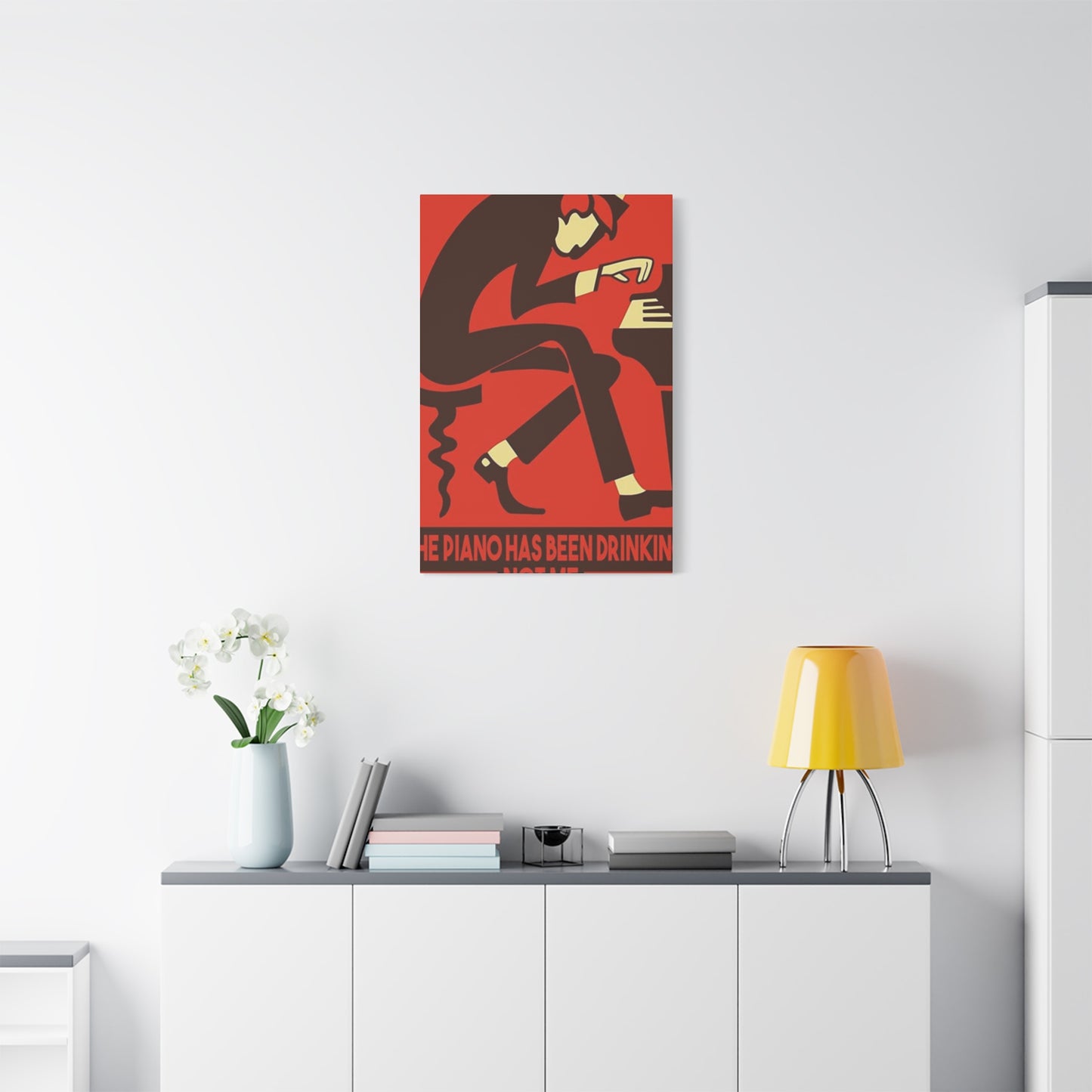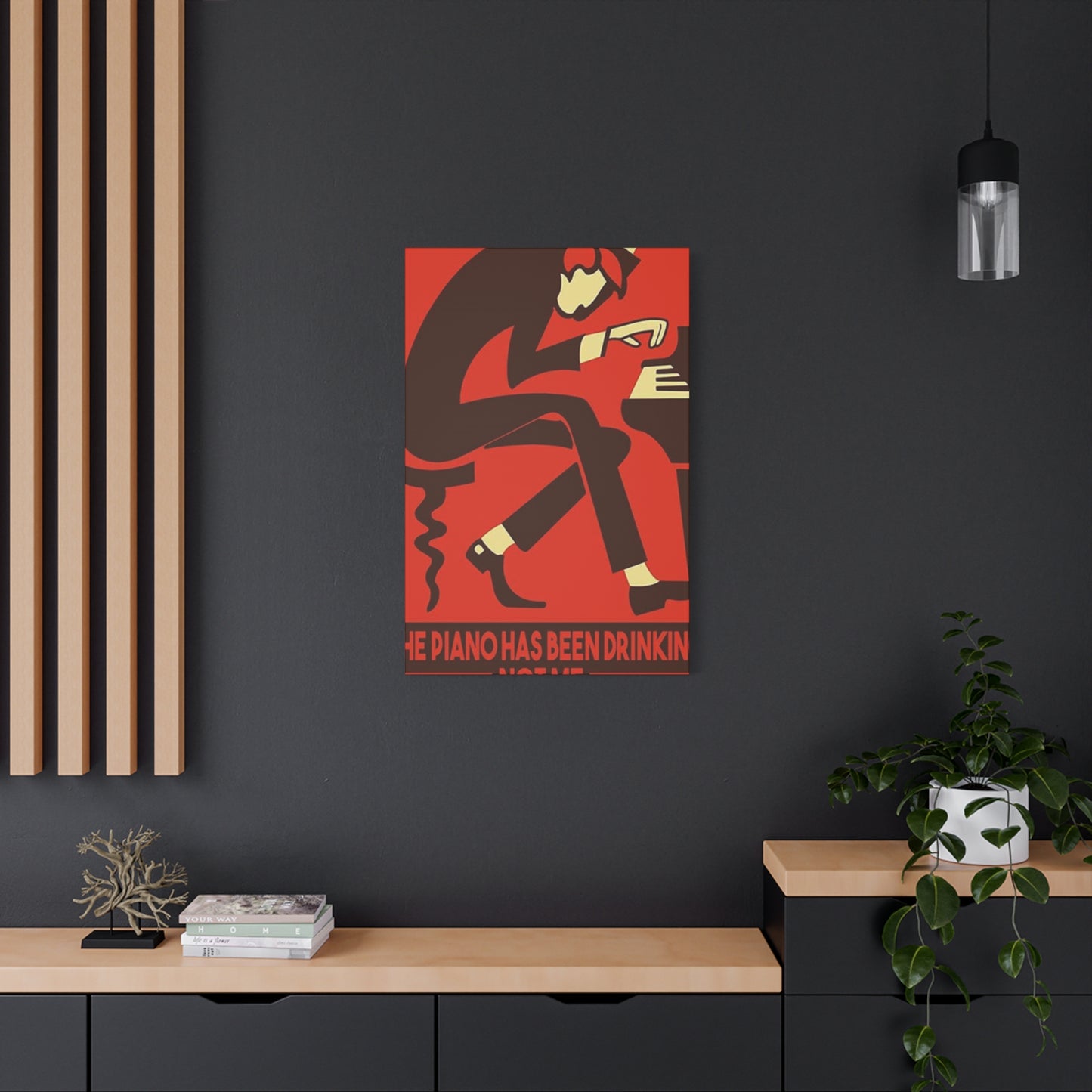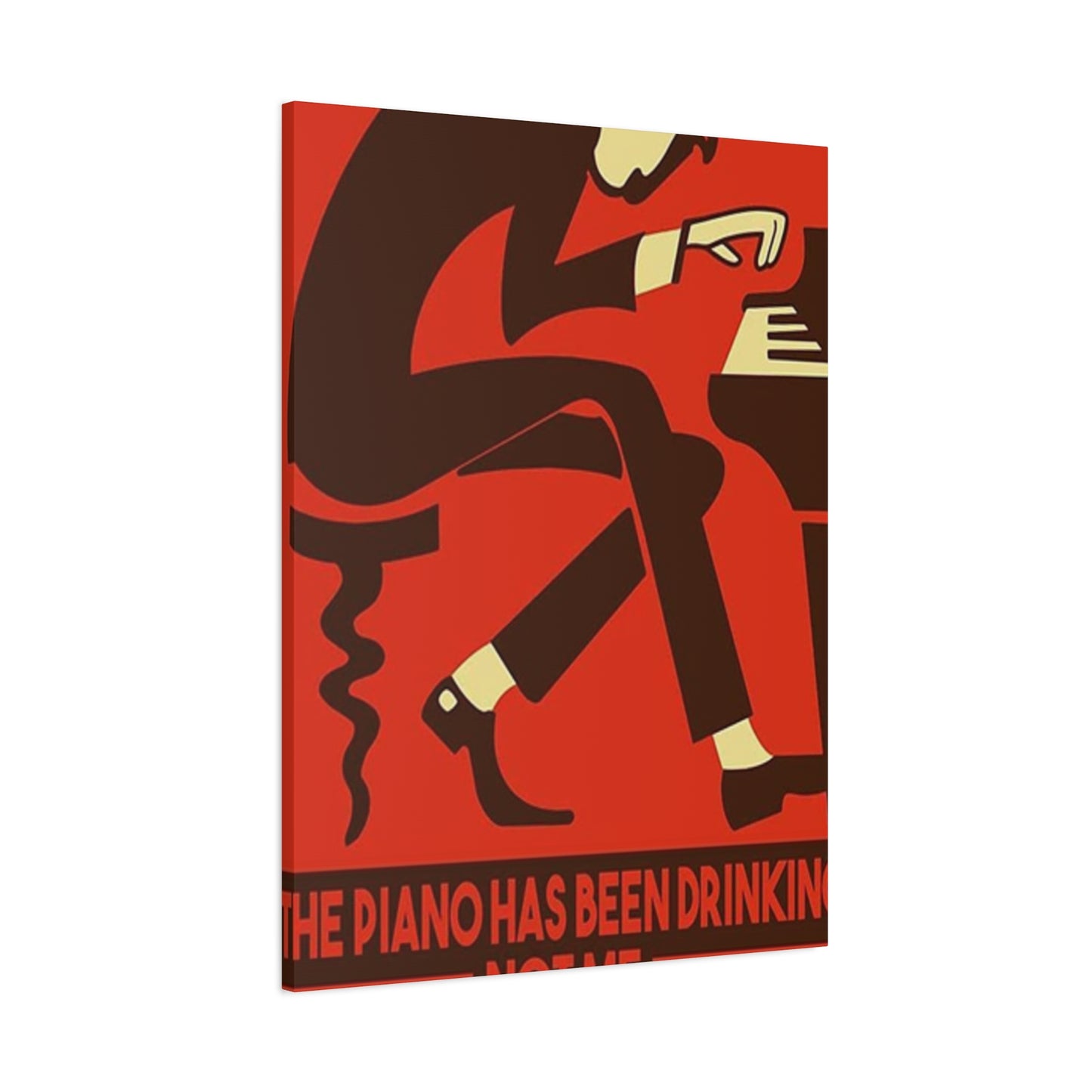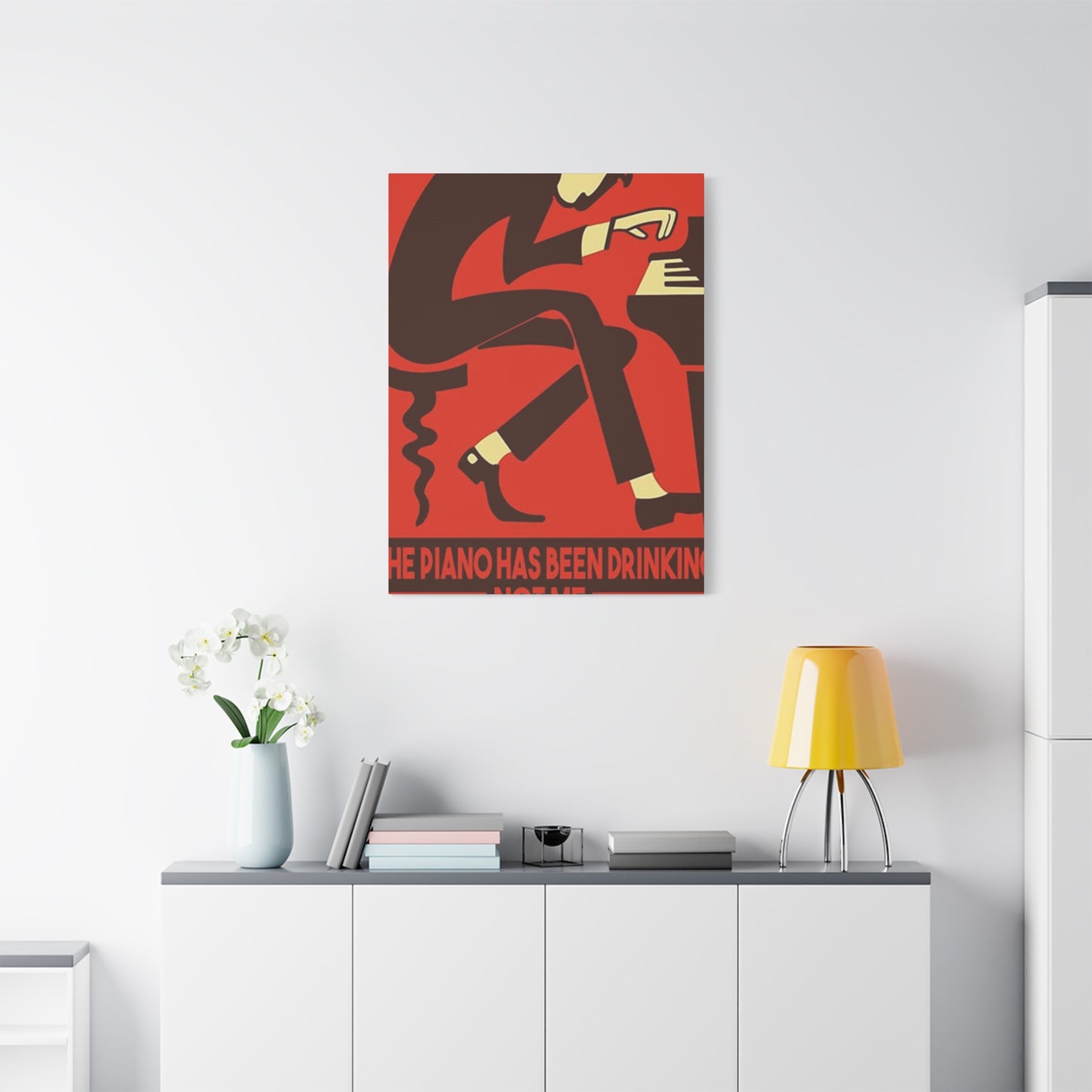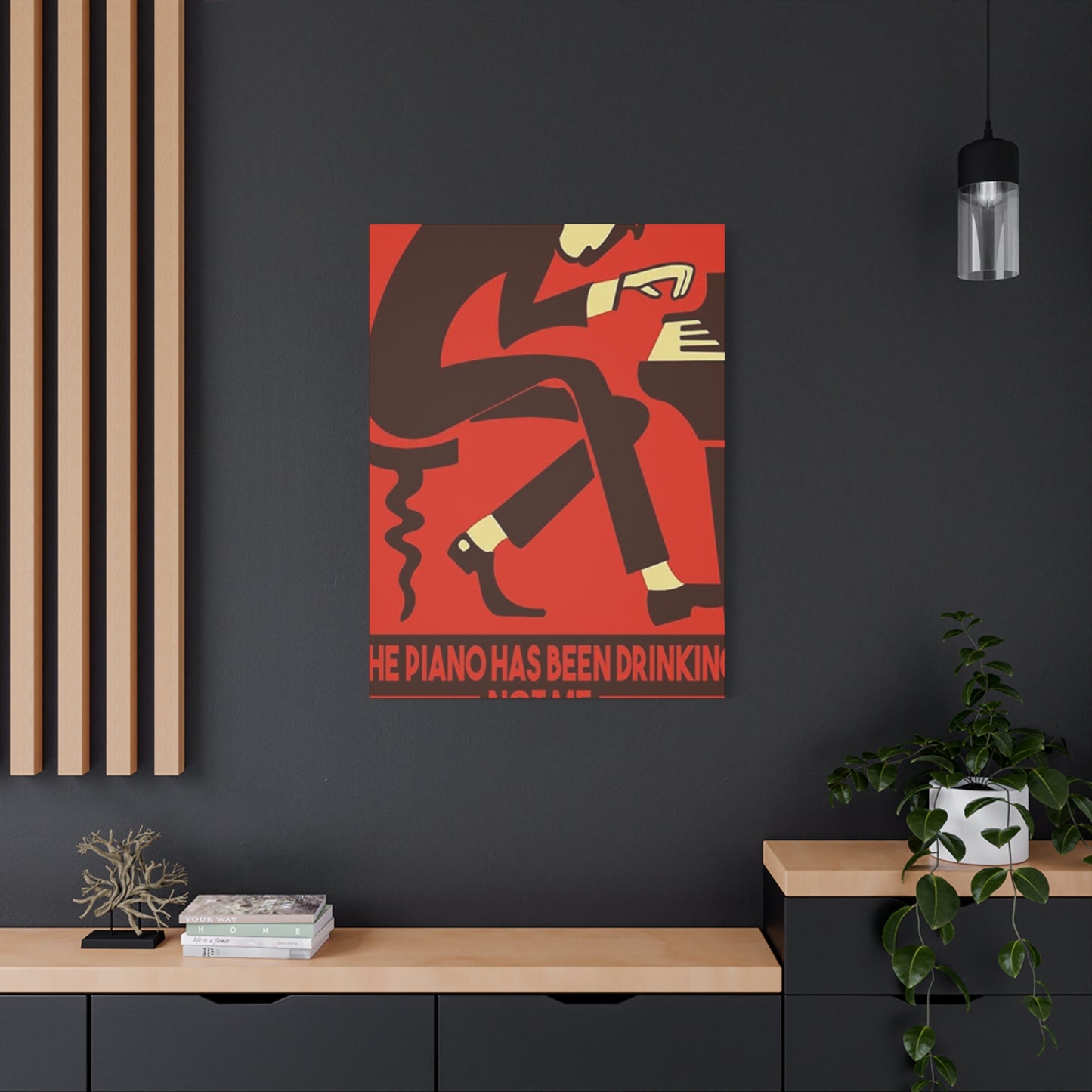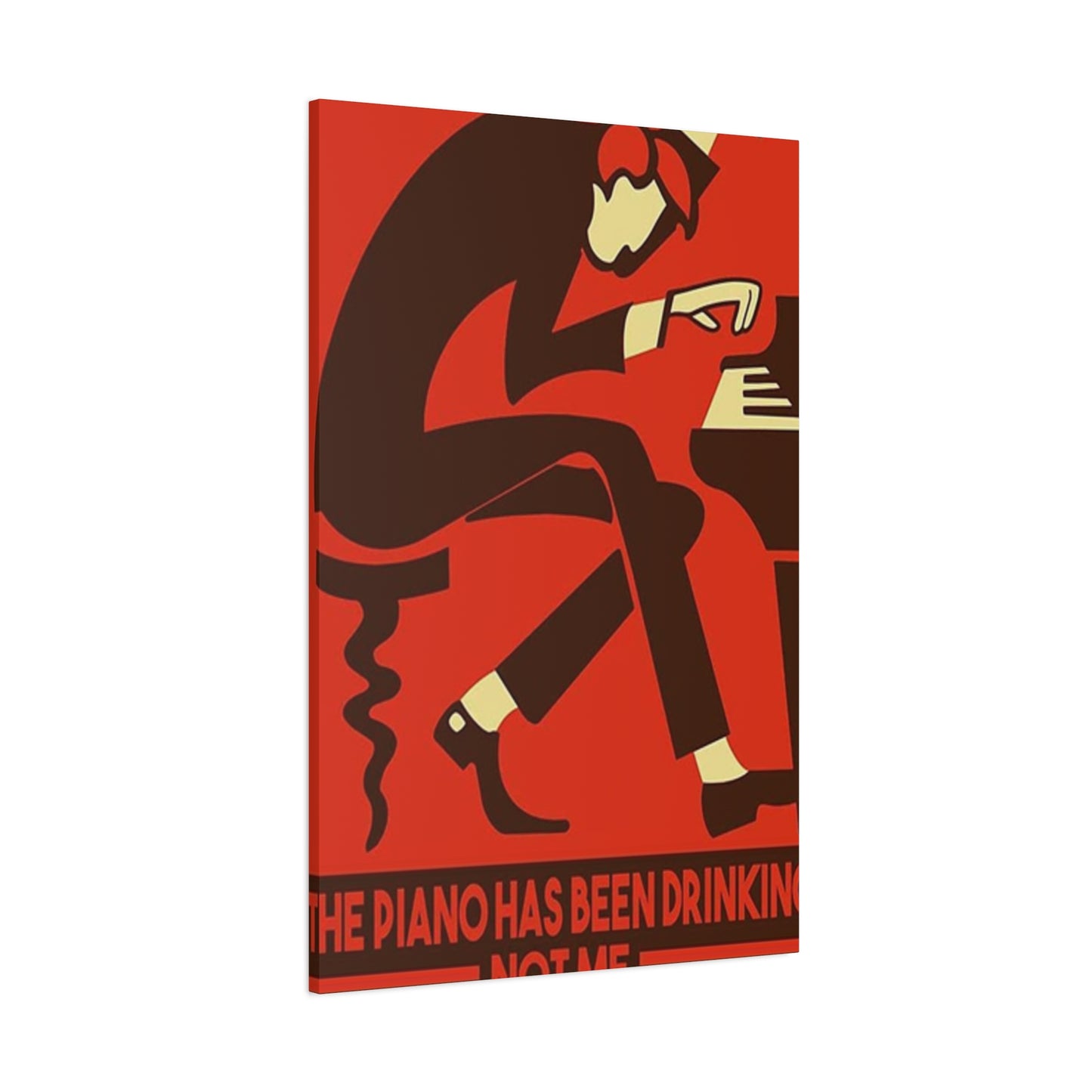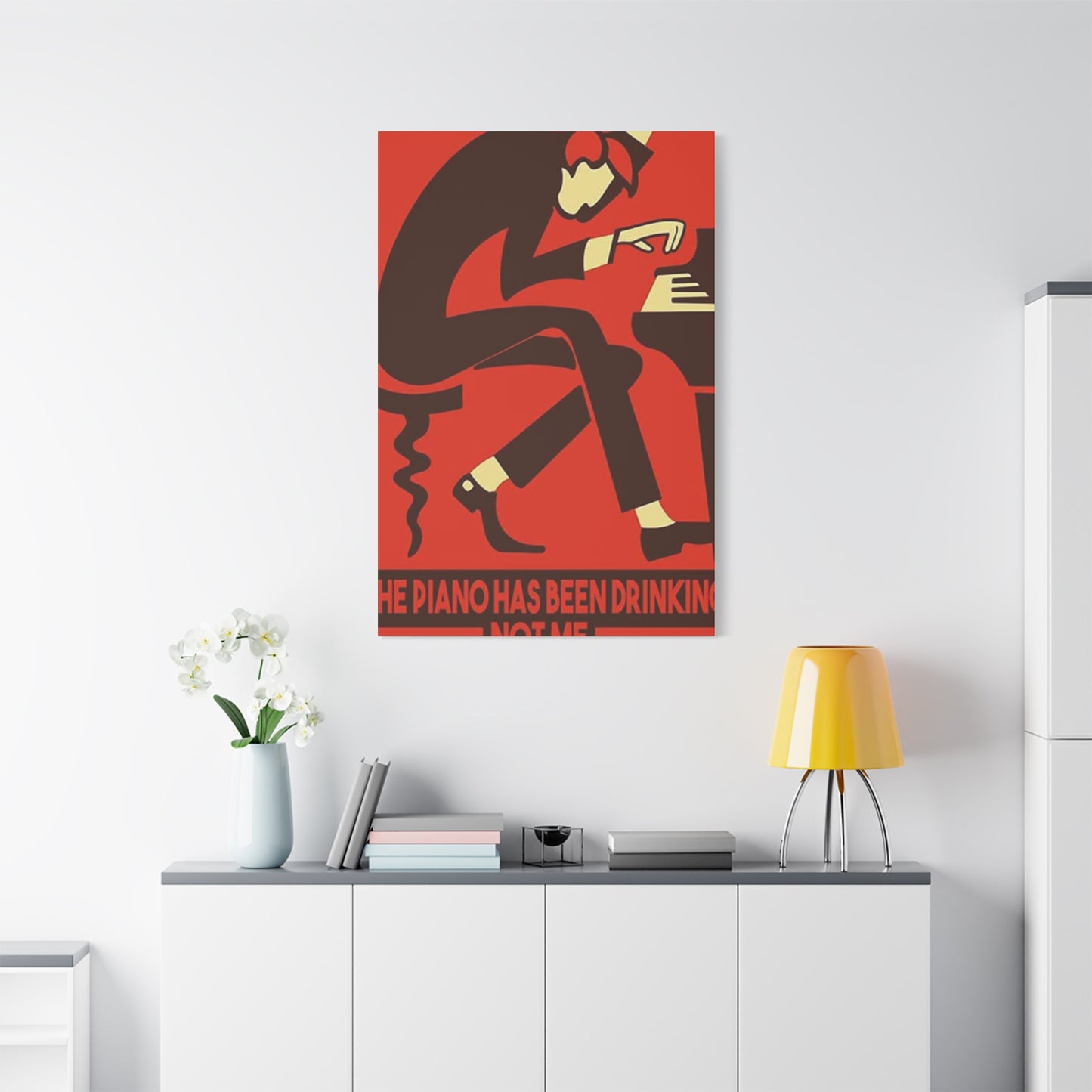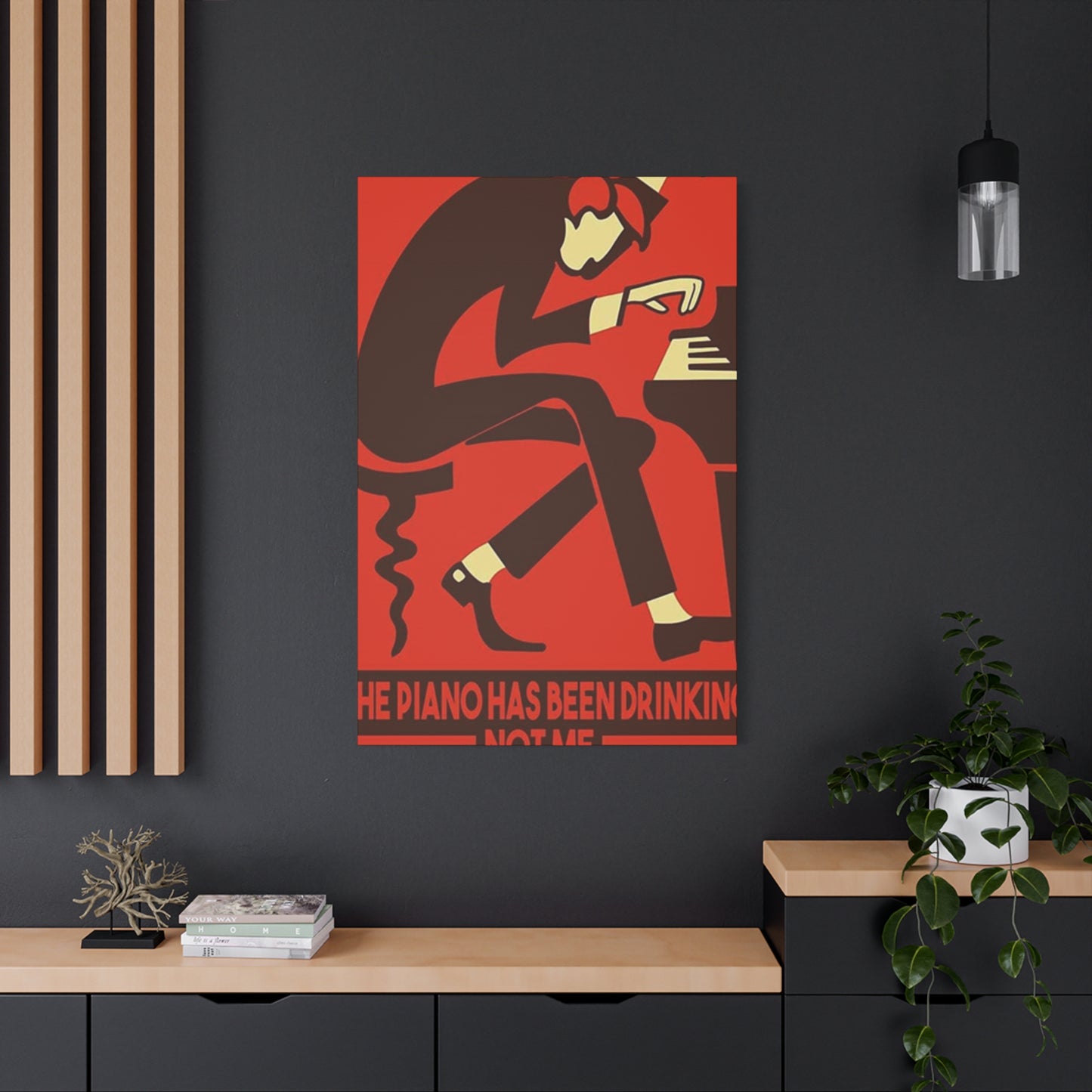Drinking Piano Wall Art: Masterpieces That Blend Musical Passion
The harmonious blend of musical artistry and visual aesthetics has captivated art enthusiasts and music lovers for centuries. Among the most enchanting forms of this artistic fusion are drinking piano wall art pieces that celebrate the timeless connection between melodies, libations, and creative expression. These remarkable artworks serve as more than mere decorative elements; they represent a cultural phenomenon that bridges the gap between auditory and visual pleasure, creating an atmosphere of sophistication and warmth in any environment.
The allure of drinking piano wall art lies in its ability to evoke powerful emotions and memories associated with intimate musical performances, cozy evening gatherings, and the romantic notion of a pianist serenading audiences while enjoying fine beverages. These pieces capture moments of spontaneous creativity, where music flows as freely as the drinks that inspire it, creating a narrative that resonates with viewers on multiple levels.
From vintage-inspired compositions featuring smoky jazz clubs to contemporary interpretations of modern piano bars, drinking piano wall art encompasses a diverse range of artistic styles and cultural references. Each piece tells a unique story, whether it depicts a solitary musician lost in contemplation over their instrument and drink, or a lively gathering where music and merriment intertwine in perfect harmony.
The growing popularity of these artistic pieces reflects our collective desire to bring elements of culture, sophistication, and personal passion into our living and working environments. Whether adorning the walls of private residences, commercial establishments, or creative workspaces, drinking piano wall art serves as a conversation starter, a mood enhancer, and a reflection of the owner's appreciation for the finer aspects of life.
Legendary Artists and Their Iconic Drinking Piano Masterpieces
The world of drinking piano wall art boasts an impressive collection of renowned artists whose works have become synonymous with the genre's distinctive charm and emotional depth. These master craftsmen have dedicated their talents to capturing the essence of musical performance intertwined with the convivial atmosphere of social drinking, creating timeless pieces that continue to inspire and captivate audiences worldwide.
Among the most celebrated contributors to this artistic movement is Henri de Toulouse-Lautrec, whose vibrant depictions of Parisian nightlife in the late 19th century perfectly encapsulated the bohemian spirit of piano-accompanied entertainment. His masterpiece "At the Moulin Rouge" showcases the electric atmosphere of cabaret culture, where pianists provided the soundtrack to evenings filled with absinthe and artistic expression. Toulouse-Lautrec's unique ability to capture both the glamour and the melancholy of these establishments has made his works highly sought-after pieces for collectors of drinking piano wall art.
Contemporary artist David Hockney has also made significant contributions to this genre through his series of pool hall and bar scene paintings, many of which feature piano players as central figures. His distinctive style, characterized by bold colors and geometric compositions, brings a modern sensibility to traditional themes of music and social gathering. Hockney's interpretation of drinking piano scenes often incorporates elements of pop art, making his pieces particularly appealing to collectors seeking artwork that bridges classical and contemporary aesthetics.
The jazz age produced numerous artists whose works have become iconic representations of drinking piano culture. Palmer Hayden's paintings of Harlem nightclubs capture the vibrant energy of the 1920s jazz scene, where piano players were the kings of entertainment venues. His attention to detail in depicting both the musical instruments and the social dynamics of these gatherings provides viewers with an authentic glimpse into a pivotal period in American cultural history.
Archibald Motley Jr., another prominent artist from this era, created powerful visual narratives that celebrate the intersection of music, community, and celebration. His painting "Nightlife" features a piano player as the focal point of a bustling nightclub scene, surrounded by patrons enjoying drinks and dancing to the rhythm of live music. Motley's work demonstrates how drinking piano wall art can serve as historical documentation while maintaining its aesthetic appeal for contemporary audiences.
Modern digital artists have also embraced this theme, creating stunning contemporary interpretations that incorporate photographic elements, digital manipulation, and mixed media techniques. Artists like Thomas Kinkade Jr. and his studio have produced limited edition pieces that romanticize the concept of intimate piano performances in cozy settings, often featuring warm lighting and inviting atmospheres that suggest the presence of fine wine or cocktails just out of frame.
The influence of these master artists extends beyond their individual works, inspiring countless contemporary creators to explore similar themes through their own unique artistic lenses. Photography-based drinking piano wall art has gained particular popularity, with artists capturing real moments of musical performance in bars, clubs, and private settings. These pieces offer a more immediate and relatable connection to the subject matter, allowing viewers to imagine themselves as part of the scene.
Street artists and muralists have also contributed to the drinking piano wall art movement by creating large-scale works that bring these intimate scenes into public spaces. These installations often incorporate elements of local culture and history, creating site-specific pieces that celebrate the role of music and social gathering in community identity.
The collecting market for drinking piano wall art has grown significantly in recent years, with auction houses regularly featuring pieces from both established and emerging artists. The value of these works often reflects not only their artistic merit but also their ability to capture the zeitgeist of particular eras or cultural movements. Collectors particularly prize pieces that demonstrate technical excellence while conveying the emotional depth and cultural significance of their subject matter.
Strategic Use of Color Palettes and Visual Contrast in Piano Bar Artwork
The masterful application of color theory and contrast techniques in drinking piano wall art represents one of the most critical aspects of creating visually compelling and emotionally resonant pieces. Artists working within this genre must carefully balance warm and cool tones, light and shadow, and complementary color relationships to achieve the desired atmosphere and mood that these artworks are renowned for.
Warm color palettes dominated by deep reds, rich golds, and amber tones frequently appear in drinking piano wall art, creating an immediate association with the cozy, intimate atmosphere of traditional piano bars and jazz clubs. These colors naturally evoke feelings of warmth, comfort, and sophistication while also referencing the golden hues of whiskey, wine, and other premium beverages that are integral to the cultural context of these pieces. Artists often use these warm tones as foundational elements, building upon them with carefully placed highlights and accents to create depth and visual interest.
The strategic use of cool colors serves as an essential counterpoint to these warm foundations, providing necessary contrast and preventing the overall composition from becoming overly saturated or monotonous. Deep blues and purples often represent the mysterious, contemplative aspects of late-night musical performances, while cooler grays and silvers can suggest the metallic surfaces of piano keys, brass instruments, or glassware. This interplay between warm and cool tones creates a visual tension that mirrors the emotional complexity of the subject matter.
Lighting plays a crucial role in drinking piano wall art, with artists employing various contrast techniques to simulate the atmospheric lighting conditions typical of intimate musical venues. Dramatic chiaroscuro effects, reminiscent of classical painting techniques, create strong contrasts between illuminated areas and deep shadows. This approach not only adds visual drama but also helps focus the viewer's attention on key elements of the composition, such as the pianist's hands on the keyboard or the amber liquid in a glass.
Many successful drinking piano wall art pieces utilize a limited color palette approach, restricting themselves to two or three dominant colors while allowing for subtle variations and gradations within this constrained range. This technique creates visual cohesion while preventing the artwork from becoming overwhelming or chaotic. Monochromatic schemes based on various shades of brown, sepia, or blue are particularly popular, as they evoke the nostalgic quality of vintage photography while maintaining the sophisticated aesthetic associated with piano bar culture.
The psychological impact of color choices in drinking piano wall art cannot be understated. Research in color psychology demonstrates that warm colors tend to make viewers feel more comfortable and social, while cooler colors can create feelings of calm contemplation or melancholy. Artists working in this genre often exploit these psychological responses to enhance the narrative and emotional impact of their pieces. For example, a composition featuring a solitary pianist might emphasize cooler tones to suggest introspection and solitude, while a piece depicting a lively piano bar gathering might favor warmer colors to convey energy and social connection.
Contrast techniques extend beyond simple color relationships to include considerations of texture, pattern, and visual weight. The smooth, reflective surfaces of piano keys and glassware provide opportunities for artists to incorporate high-contrast highlights that add sparkle and life to their compositions. Meanwhile, the soft, organic forms of human figures and fabric can be rendered with more subtle gradations to create visual balance and prevent any single element from dominating the composition.
Contemporary digital artists working in the drinking piano wall art genre have access to an unprecedented range of color manipulation tools, allowing for highly sophisticated approaches to color and contrast. Digital color grading techniques borrowed from cinematography enable artists to create mood-specific color treatments that enhance the atmospheric qualities of their work. Split-toning, where highlights and shadows are treated with different color casts, has become particularly popular for creating the warm, nostalgic feeling associated with vintage piano bar photography.
The printing and reproduction process for drinking piano wall art also influences color and contrast decisions. Artists must consider how their chosen palette will translate across different media, from traditional canvas prints to modern metallic and acrylic substrates. Understanding the characteristics of various printing processes helps ensure that the final piece maintains the artist's intended color relationships and contrast levels when displayed in the buyer's chosen environment.
Seasonal color considerations have also emerged as an important factor in drinking piano wall art design. Pieces intended for holiday or seasonal display might incorporate color palettes that align with specific times of year, such as deeper, richer tones for autumn and winter pieces, or lighter, more vibrant colors for spring and summer compositions. This seasonal approach allows collectors to rotate their artwork throughout the year, maintaining visual interest while celebrating the changing moods and atmospheres associated with different seasons.
Professional Framing Solutions and Display Techniques for Musical Artwork
The presentation of drinking piano wall art through appropriate framing and display techniques can dramatically enhance the visual impact and perceived value of these artistic pieces. Professional framing serves not only as protection for the artwork but also as an integral component of the overall aesthetic experience, requiring careful consideration of materials, styles, and positioning to achieve optimal results.
Traditional wooden frames remain the most popular choice for drinking piano wall art, with dark wood finishes such as mahogany, walnut, and ebony providing excellent complementary tones to the warm color palettes typical of this genre. These rich wood tones create a natural harmony with the sophisticated atmosphere depicted in the artwork while adding an element of craftsmanship and quality to the overall presentation. The grain patterns and natural variations in wood also provide subtle textural interest that enhances rather than competes with the artistic content.
Contemporary framing approaches for drinking piano wall art often incorporate metal elements, particularly in brushed gold, bronze, or copper finishes that echo the metallic components found in piano construction and barware. These materials create sophisticated, modern presentations that work particularly well with digital artwork and photography-based pieces. The reflective qualities of metal frames can also help brighten the display area and draw attention to the artwork, making them excellent choices for pieces displayed in areas with limited natural light.
Matting decisions play a crucial role in the overall presentation of drinking piano wall art. Wide, museum-quality mats in neutral colors such as cream, warm white, or light gray provide breathing room around the artwork while preventing visual competition with the piece itself. Double matting techniques, where a thin inner mat in a complementary color is combined with a wider outer mat, add depth and sophistication to the presentation. For pieces with warm color palettes, subtle warm-toned mats can enhance the cozy, intimate feeling of the artwork.
The choice of glazing material significantly impacts both the protection and visual quality of framed drinking piano wall art. Museum-quality UV-protective glass helps prevent fading and color shifts over time, particularly important for pieces displayed in areas with significant natural light exposure. Anti-reflective coatings reduce glare and improve visibility from various viewing angles, ensuring that the artwork can be appreciated regardless of lighting conditions. For contemporary pieces or those displayed in high-traffic areas, acrylic glazing options provide similar protective benefits with reduced weight and increased shatter resistance.
Sizing considerations for drinking piano wall art displays require careful planning to achieve proper visual balance within the intended environment. Large-format pieces make excellent focal points for living rooms, dining areas, or commercial establishments, where their presence can set the tone for the entire room. Medium-sized pieces work well as part of gallery wall arrangements or as accent pieces in more intimate settings. Small format pieces can be highly effective when grouped in series or used to create visual interest in hallways, bedrooms, or office environments.
Professional installation techniques ensure that drinking piano wall art is displayed safely and at optimal viewing heights. The standard rule of hanging artwork with the center at eye level (approximately 57-60 inches from the floor) works well for most residential applications, though commercial settings may require adjustments based on seating arrangements and traffic patterns. Heavy pieces require appropriate wall anchoring systems, and consideration must be given to wall material and construction when planning installations.
Lighting design plays a crucial role in maximizing the visual impact of drinking piano wall art displays. Picture lighting fixtures, whether mounted directly to frames or positioned as adjustable track lights, can dramatically enhance the colors and contrast within the artwork while creating an attractive focal point. LED lighting systems offer excellent color rendering properties while generating minimal heat, making them ideal for long-term artwork display. The angle and intensity of lighting should be carefully adjusted to minimize glare while providing adequate illumination to reveal all the subtle details within the piece.
Creating gallery wall arrangements with drinking piano wall art requires careful planning to achieve visual cohesion while maintaining individual piece identity. Template planning, where paper cutouts representing each frame are arranged and rearranged on the wall before final installation, helps ensure optimal spacing and alignment. Maintaining consistent spacing between pieces, typically 2-3 inches for smaller works and 3-5 inches for larger pieces, creates a professional, curated appearance.
Climate considerations affect the long-term preservation of drinking piano wall art, particularly in environments with significant temperature or humidity variations. Avoiding placement near heating vents, air conditioning units, or areas with direct sunlight helps maintain stable conditions that prevent warping, fading, or other forms of deterioration. For valuable pieces, climate-controlled environments with consistent temperature and humidity levels provide optimal preservation conditions.
Regular maintenance of framed drinking piano wall art ensures continued visual appeal and protection. Gentle cleaning of glass or acrylic glazing with appropriate materials prevents dust buildup that can dull the appearance of the artwork. Periodic inspection of hanging hardware and frame construction helps identify potential issues before they result in damage or safety concerns.
Enhancing Music Room Aesthetics with Piano-Themed Decorative Elements
The integration of drinking piano wall art into dedicated music rooms creates an environment that celebrates the intersection of visual and auditory artistic expression while establishing a sophisticated atmosphere conducive to both performance and appreciation. These specialized environments benefit enormously from carefully curated artwork that reinforces their musical purpose while adding layers of cultural and aesthetic depth.
Music rooms devoted to piano practice and performance naturally align with the themes depicted in drinking piano wall art, creating a harmonious relationship between the functional aspects of the room and its decorative elements. The presence of an actual piano instrument provides an immediate connection to the subject matter depicted in the artwork, while the artwork adds historical context and cultural richness to the musical environment. This symbiotic relationship enhances both the functionality and the aesthetic appeal of the room.
Strategic placement of drinking piano wall art within music rooms requires consideration of both visual impact and practical functionality. Positioning artwork where it can be viewed from the piano bench allows performers to draw inspiration from the pieces during practice sessions or informal performances. However, care must be taken to avoid creating visual distractions that might interfere with reading sheet music or focusing on technique development. The ideal placement often involves creating a visual focal point on the wall opposite the piano, where the artwork can be appreciated during breaks or by listeners during performances.
The acoustic properties of music rooms present unique considerations for artwork selection and framing. Hard surfaces that are beneficial for musical acoustics can create challenges for artwork display, as they may contribute to excessive reverberation or echo. Selecting pieces with substantial matting or frames that include sound-absorbing materials can help address these acoustic concerns while maintaining the desired visual impact. Fabric-wrapped frames or pieces mounted on acoustic panels provide dual functionality by enhancing both the visual and auditory characteristics of the room.
Color coordination between drinking piano wall art and other music room elements helps create a cohesive, professionally designed appearance. The rich, warm tones common in piano finishes, such as ebony, mahogany, and cherry wood, provide excellent reference points for selecting complementary artwork. Pieces that incorporate similar wood tones or metallic accents that echo the brass and steel components of piano construction create natural visual harmony within the room.
Lighting design in music rooms must balance the practical needs of musical performance with the aesthetic requirements of artwork display. Adjustable lighting systems that can provide bright, even illumination for reading music while also offering softer, more atmospheric lighting for casual listening or social gatherings work exceptionally well with drinking piano wall art. Dimmer controls allow for easy adjustment between performance and ambiance modes, with the artwork serving as a visual anchor point that remains attractive under various lighting conditions.
The educational value of drinking piano wall art in music rooms extends beyond mere decoration, providing opportunities for discussion about musical history, cultural contexts, and the social aspects of piano performance. Pieces that depict specific historical periods or musical genres can serve as conversation starters or inspiration for repertoire selection. Young piano students often find motivation in artwork that glamorizes and romanticizes piano performance, helping them visualize themselves as part of a broader musical tradition.
Storage and organization considerations in music rooms can be enhanced through the strategic use of drinking piano wall art to create visual zones or focal points that help organize the functional aspects of the room. Artwork positioned above sheet music storage areas, piano benches, or other musical accessories helps create defined areas within the room while maintaining visual continuity. This approach is particularly effective in larger music rooms or multi-purpose areas where the piano area needs to be distinguished from other activities.
The social aspects of music rooms are significantly enhanced by the presence of drinking piano wall art that depicts communal musical experiences. Pieces showing piano bars, jazz clubs, or intimate house concerts help reinforce the idea that music is meant to be shared and enjoyed in social settings. This can be particularly valuable in homes where the music room serves double duty as entertainment area, as the artwork helps establish the appropriate atmosphere for both formal and informal gatherings.
Seasonal rotation of drinking piano wall art in music rooms provides opportunities to refresh the visual environment while maintaining thematic consistency. Pieces with warmer color palettes might be featured during autumn and winter months to create a cozy, intimate atmosphere, while lighter, more vibrant pieces could be displayed during spring and summer. This rotation keeps the room feeling fresh and current while allowing collectors to enjoy different pieces from their collection throughout the year.
Technology integration in modern music rooms can be complementary to drinking piano wall art displays through the use of digital frames or projection systems that can display rotating collections of related artwork. This approach allows for greater variety while maintaining the curated feeling of a traditional gallery display. However, care must be taken to ensure that digital displays do not compete with or diminish the impact of physical artwork within the room.
The Perfect Gift Philosophy: Musical Wall Art for Enthusiasts
The selection and presentation of drinking piano wall art as gifts for music enthusiasts represents one of the most thoughtful and meaningful gesture categories available to gift-givers seeking to honor the recipient's passion while providing lasting aesthetic value. These artistic pieces transcend typical gift categories by combining personal meaning, cultural significance, and practical decorative function into a single, impactful present.
Understanding the recipient's musical background and preferences forms the foundation for selecting appropriate drinking piano wall art gifts. Classical piano enthusiasts might gravitate toward more traditional, refined pieces that depict formal concert settings or intimate recital environments, while jazz lovers often appreciate artwork that captures the spontaneous, improvisational spirit of piano performance in club settings. Contemporary music fans might prefer modern interpretations that incorporate digital elements or abstract representations of musical themes combined with social drinking culture.
The gift-giving timeline provides numerous opportunities for presenting drinking piano wall art to music lovers throughout the year. Birthday presentations allow for highly personalized selections based on the recipient's specific tastes and current collection, while holiday gifts can incorporate seasonal themes or colors that align with traditional celebratory periods. Graduation gifts for music students or teachers carry additional significance as they mark important milestones in musical education and career development.
Achievement recognition through drinking piano wall art gifts creates lasting commemorative pieces that celebrate specific musical accomplishments. Successful recital performances, competition wins, teaching appointments, or other professional milestones can be honored with carefully selected artwork that reflects the significance of the achievement. These commemorative pieces often become treasured parts of the recipient's personal collection, serving as permanent reminders of important career moments.
Budget considerations for drinking piano wall art gifts span a broad range, making this category accessible for various gift-giving situations. Limited edition prints from established artists provide affordable options that still carry artistic prestige and collectible value. Original works from emerging artists offer unique pieces at moderate price points while potentially representing good investment value as the artist's reputation grows. High-end collector pieces from renowned artists serve as premium gifts appropriate for very special occasions or relationships.
Customization options add personal significance to drinking piano wall art gifts, with many artists and publishers offering personalization services that can incorporate names, dates, or specific details that relate to the recipient's musical experience. Custom commissioning allows for completely unique pieces that capture specific venues, performances, or personal musical memories, creating one-of-a-kind gifts that cannot be replicated or found elsewhere.
Presentation and packaging considerations significantly impact the gift-giving experience for drinking piano wall art. Professional framing services can prepare pieces for immediate display, eliminating the recipient's need to arrange for framing while ensuring optimal presentation quality. Custom matting with personalized engraving or embossing adds an extra layer of thoughtfulness and permanence to the gift. Elegant presentation packaging that protects the artwork while creating anticipation enhances the overall gift-receiving experience.
Educational components can enhance drinking piano wall art gifts by providing context and background information about the artist, the depicted scene, or the cultural significance of the piece. Artist biographies, historical information about the musical venues or periods depicted, or technical details about the artistic techniques employed add depth and meaning to the gift while demonstrating the giver's thoughtfulness in selection and presentation.
Practical considerations for drinking piano wall art gifts include ensuring compatibility with the recipient's existing decor and available display options. Selecting pieces in appropriate sizes for the intended display location prevents practical difficulties while ensuring that the gift can be properly enjoyed and appreciated. Considering the recipient's color preferences and existing artwork helps ensure that the new piece will integrate well with their current aesthetic environment.
The emotional impact of drinking piano wall art gifts often extends far beyond their material value, particularly when the pieces connect with the recipient's personal musical memories or aspirations. Artwork that depicts venues where the recipient has performed, musical styles that hold special meaning, or cultural traditions that resonate with their background creates emotional connections that enhance the long-term value and appreciation of the gift.
Professional consultation services can assist gift-givers in selecting appropriate drinking piano wall art pieces when their own knowledge of the recipient's preferences is limited. Gallery professionals, art consultants, and specialized retailers often provide guidance services that help match specific pieces with recipient characteristics, ensuring successful gift selections that will be genuinely appreciated and enjoyed.
Long-term value considerations make drinking piano wall art particularly attractive as gifts, as quality pieces often appreciate in value while providing ongoing aesthetic enjoyment. This combination of practical utility, emotional significance, and potential financial appreciation creates a gift category that continues providing value to the recipient long after the initial presentation occasion.
Typography Integration and Visual Messaging in Musical Poster Design
The sophisticated integration of typography with visual imagery in drinking piano wall art represents a crucial design element that can significantly enhance the communicative power and aesthetic appeal of these artistic pieces. Typography serves multiple functions within this genre, from providing contextual information and creating atmospheric mood to establishing cultural authenticity and guiding viewer interpretation of the depicted scenes.
Historical typography styles frequently appear in drinking piano wall art, with designers drawing inspiration from specific periods to enhance the authenticity and emotional resonance of their pieces. Art Deco lettering styles popular during the 1920s and 1930s jazz era provide bold, geometric character forms that complement the sophisticated urban atmosphere typical of piano bar culture. These typefaces, characterized by their clean lines, elegant proportions, and subtle ornamental details, create immediate associations with the golden age of American nightlife and musical entertainment.
Script and calligraphic typography options offer opportunities to introduce elegance and personal touch to drinking piano wall art compositions. Hand-lettered elements can suggest the intimate, personal nature of musical performance while adding organic, flowing lines that contrast beautifully with the geometric forms of piano keyboards and architectural elements. Modern calligraphy styles provide contemporary interpretations of traditional script techniques, allowing artists to maintain classical elegance while appealing to contemporary aesthetic sensibilities.
The placement and integration of typography within drinking piano wall art compositions requires careful consideration of visual hierarchy and compositional balance. Text elements must support rather than compete with the primary visual imagery, serving as complementary components that enhance rather than distract from the overall artistic impact. Strategic placement techniques include positioning text along natural sight lines within the composition, using negative spaces effectively, and ensuring that typography reinforces the directional flow established by other compositional elements.
Color relationships between typography and other design elements create opportunities for subtle visual harmony or dramatic contrast effects, depending on the desired artistic impact. Typography rendered in colors that echo other elements within the composition, such as the golden tones of piano brass hardware or the amber hues of aged whiskey, creates cohesive visual relationships that strengthen the overall design. Alternatively, contrasting color choices can make text elements more prominent while adding visual excitement and contemporary appeal.
Contemporary digital typography techniques have expanded the creative possibilities for drinking piano wall art significantly, allowing designers to incorporate advanced effects such as transparency, shadowing, texturing, and dimensional treatments that were previously impossible with traditional methods. These digital capabilities enable the creation of text elements that appear to interact with environmental elements within the composition, such as typography that seems to be reflected in glass surfaces or illuminated by atmospheric lighting effects.
Multilingual typography considerations have become increasingly important in drinking piano wall art as these pieces gain international appeal. Incorporating text in multiple languages can broaden the market appeal while adding cultural richness to the artistic content. However, careful attention must be paid to ensuring that translation accuracy and cultural appropriateness are maintained, particularly when dealing with idiomatic expressions or culturally specific terms related to music and social drinking traditions.
The readability and legibility of typography in drinking piano wall art must be carefully balanced with aesthetic considerations, ensuring that text elements remain functional while contributing to the overall artistic impact. Factors such as contrast ratios, character spacing, and size relationships affect both the practical functionality and the visual appeal of text elements. Advanced typography design often employs subtle adjustments to letter spacing, line height, and character proportions to achieve optimal readability while maintaining design integrity.
Branding and commercial applications of drinking piano wall art often require integration of specific typography elements that maintain consistency with established brand identities while working harmoniously within the artistic composition. This challenge requires sophisticated design skills to balance commercial requirements with artistic integrity, often resulting in creative solutions that enhance both brand recognition and aesthetic appeal.
Custom typography development for drinking piano wall art projects allows for completely unique text treatments that perfectly complement specific artistic visions. Hand-drawn lettering, modified existing typefaces, and completely original character designs provide opportunities for artists to create truly distinctive pieces that stand out in an increasingly crowded marketplace. These custom typography solutions often become signature elements that help establish artist recognition and brand identity.
The psychological impact of typography choices in drinking piano wall art extends beyond simple readability to influence viewer emotions and cultural associations. Research in typography psychology demonstrates that different typeface styles can evoke specific emotional responses and cultural memories, making typography selection a powerful tool for enhancing the intended mood and message of artistic pieces. Classic serif typefaces suggest tradition and sophistication, while modern sans-serif options convey contemporary cleanliness and efficiency.
Technical production considerations for typography in drinking piano wall art include ensuring that text elements reproduce clearly across various media and size formats. Vector-based typography solutions provide scalability advantages that maintain crisp character definition at any reproduction size, while rasterized text treatments may require multiple resolution versions to ensure optimal quality across different applications and printing methods.
Atmospheric Enhancement Through Relaxing Musical Visual Elements
The creation of tranquil, sophisticated atmospheres through carefully selected drinking piano wall art requires understanding how visual elements interact with environmental factors to produce desired emotional responses and mood enhancement. These artistic pieces function as powerful atmospheric tools that can transform ordinary rooms into refined, culturally rich environments that promote relaxation, contemplation, and social enjoyment.
Color psychology plays a fundamental role in the atmospheric capabilities of drinking piano wall art, with warm earth tones creating immediate associations with comfort, security, and intimate social gathering. The prevalence of amber, deep gold, and rich brown tones in many pieces directly references the warm lighting typical of piano bars and jazz clubs, creating visual cues that trigger memory associations with relaxing evening entertainment. These color relationships help establish environmental mood even before other atmospheric elements come into play.
The depiction of intimate venue settings in drinking piano wall art helps viewers mentally transport themselves to peaceful, sophisticated environments removed from daily stress and complications. Artwork showing quiet piano corners in upscale restaurants, cozy fireplace scenes with musical instruments, or peaceful outdoor concert settings provides visual escape opportunities that can significantly impact room atmosphere and occupant mood. These escapist elements serve as windows into alternate environments where relaxation and cultural appreciation take precedence over everyday concerns.
Lighting interactions between drinking piano wall art and room illumination systems create opportunities for enhanced atmospheric effects throughout different times of day and various usage scenarios. Pieces with strong light-dark contrasts can appear dramatically different under bright daytime lighting compared to softer evening illumination, providing dynamic atmospheric changes that keep the visual environment fresh and engaging. Strategic lighting design can emphasize specific elements within artwork at different times, creating subtle variations in mood and focus.
The scale and proportional relationships of drinking piano wall art within room environments significantly impact their atmospheric effectiveness. Large-format pieces can dominate room personality and establish strong atmospheric themes, while smaller pieces contribute subtle atmospheric enhancement without overwhelming other environmental elements. Medium-sized pieces often provide optimal balance, offering substantial atmospheric impact while maintaining compatibility with varied room layouts and existing decorative elements.
Grouping and arrangement strategies for multiple drinking piano wall art pieces allow for sophisticated atmospheric layering that creates rich, complex environmental moods. Series arrangements that tell visual stories or explore thematic variations can create immersive atmospheric experiences that engage viewers on multiple levels. Careful spacing and compositional relationships between grouped pieces prevent visual confusion while maximizing atmospheric enhancement potential.
The integration of drinking piano wall art with other atmospheric elements such as live plants, decorative lighting, and complementary furniture arrangements creates synergistic effects that amplify the relaxing qualities of all environmental components. Natural elements like plants or water features can enhance the organic, living quality of atmospheric enhancement, while carefully selected lighting fixtures reinforce the warm, intimate feeling typical of piano bar culture.
Seasonal atmospheric adaptation through rotating drinking piano wall art selections allows for dynamic environmental enhancement that responds to changing moods and cultural seasons. Warmer, cozier pieces during autumn and winter months create inviting retreat atmospheres, while lighter, more vibrant selections during spring and summer can create energizing yet still relaxing environmental moods. This adaptive approach prevents atmospheric staleness while maintaining thematic consistency.
The therapeutic potential of drinking piano wall art for stress reduction and relaxation enhancement has gained recognition in both residential and commercial applications. Healthcare facilities, counseling offices, and wellness centers increasingly incorporate these peaceful, culturally rich pieces to create calming environments that support healing and relaxation. The combination of musical themes with sophisticated visual presentation provides non-intrusive atmospheric enhancement that supports rather than competes with therapeutic activities.
Sound and visual synergy opportunities arise when drinking piano wall art is displayed in environments where actual piano music is played or recorded music is featured. The visual representation of musical performance combined with corresponding auditory experiences creates multi-sensory atmospheric enhancement that can be remarkably effective for relaxation and mood improvement. This synergistic approach works particularly well in restaurants, lounges, and private entertainment areas.
Maintenance of atmospheric effectiveness requires consideration of how drinking piano wall art ages and changes over time, ensuring that pieces continue providing desired atmospheric enhancement throughout their display lifetime. Factors such as fading, dust accumulation, and changes in surrounding decor can impact atmospheric effectiveness, making regular evaluation and maintenance important for sustained atmospheric benefits. Quality framing and appropriate environmental controls help preserve both the physical condition and atmospheric impact of these artistic pieces.
Cultural authenticity in drinking piano wall art selections helps ensure that atmospheric enhancement feels genuine and sophisticated rather than artificial or superficial. Pieces that accurately represent historical periods, authentic venue types, or legitimate cultural traditions create more convincing atmospheric effects than generic or inauthentic representations. This authenticity factor becomes particularly important in commercial applications where customers expect genuine cultural experiences.
Cultural Heritage and Social Context in Musical Drinking Artwork
The rich cultural tapestry woven throughout drinking piano wall art reflects centuries of social tradition, musical evolution, and the fundamental human connection between artistic expression and communal celebration. These artistic pieces serve as visual chronicles of how music and social drinking have intersected across different cultures, time periods, and social contexts, creating a fascinating record of human cultural development and social interaction patterns.
Historical documentation through drinking piano wall art provides valuable insights into the social customs and cultural practices of various periods, particularly the evolution of nightlife entertainment and musical performance traditions. The transition from formal concert hall presentations to intimate piano bar performances represents a democratization of musical culture, making sophisticated entertainment accessible to broader social classes and creating new forms of cultural expression that combined artistic appreciation with social interaction.
The jazz age represents a particularly rich period for drinking piano wall art themes, as this era witnessed unprecedented social changes that revolutionized both musical culture and social drinking practices. The speakeasy culture of the Prohibition era created unique social environments where piano music provided essential atmospheric enhancement for illicit social gathering, creating cultural narratives that continue to fascinate contemporary audiences. These historical references add layers of meaning and authenticity to modern drinking piano wall art collections.
International cultural variations in drinking piano traditions provide diverse thematic material for artistic exploration, from the sophisticated salon culture of 19th-century European capitals to the honky-tonk piano traditions of American frontier settlements. Each cultural context brings unique aesthetic elements, social dynamics, and historical significance that can be celebrated and preserved through thoughtful artistic representation. These international perspectives enrich the cultural depth available within the drinking piano wall art genre.
Social class implications and cultural accessibility themes frequently appear in drinking piano wall art, reflecting the complex relationships between musical culture, economic status, and social mobility throughout history. The transformation of piano music from exclusive aristocratic entertainment to popular democratic art form represents broader cultural shifts toward social equality and cultural accessibility. Contemporary pieces often celebrate this democratic evolution while maintaining appreciation for the sophistication and artistry of musical performance traditions.
Gender roles and social dynamics depicted in drinking piano wall art provide insights into changing social expectations and cultural norms throughout different historical periods. Early pieces often show clearly defined gender roles with male performers and mixed-gender audiences, while contemporary works reflect more diverse and egalitarian social arrangements. These evolving representations document social progress while maintaining appreciation for historical cultural contexts.
The relationship between musical performance and alcohol consumption has cultural significance that extends far beyond simple entertainment, representing fundamental human needs for community, celebration, and emotional expression. Drinking piano wall art often captures these deeper cultural meanings, showing how music and libation combine to create environments that support social bonding, creative inspiration, and cultural continuity across generations.
Religious and spiritual themes occasionally appear in drinking piano wall art, particularly in pieces that explore the relationship between musical inspiration and transcendent experience. The concept of music as spiritual expression combined with the social aspects of communal gathering creates complex cultural narratives that can be explored through sophisticated artistic treatment. These themes add philosophical depth while maintaining accessibility for diverse audience interpretations.
Economic and commercial aspects of piano bar culture provide important cultural context for understanding the development of drinking piano traditions as both artistic expression and commercial entertainment. The evolution from private salon entertainment to commercial venue culture represents significant changes in how society values and supports musical performance, creating business models that sustain professional musicians while providing accessible cultural experiences for diverse audiences.
Contemporary cultural relevance of drinking piano wall art demonstrates how traditional themes continue resonating with modern audiences despite dramatic changes in entertainment technology and social practices. The enduring appeal of intimate, acoustic musical performance combined with sophisticated social environments suggests fundamental human needs that transcend technological innovation and social change. This cultural continuity provides rich material for contemporary artistic exploration.
Cultural preservation efforts through drinking piano wall art help maintain awareness and appreciation of traditional musical culture in an increasingly digital and automated entertainment landscape. These artistic pieces serve as cultural ambassadors that introduce younger generations to historical traditions while maintaining their relevance for contemporary appreciation.
Conclusion
Drinking piano wall art is a compelling fusion of music, emotion, and artistic creativity that captures the soulful essence of musical passion. This unique genre of artwork blends the expressive power of piano music with symbolic imagery, often portraying moments of introspection, celebration, or relaxation, sometimes with the motif of drinking or conviviality to enhance the narrative. Such masterpieces not only decorate a space but also evoke the deep emotional connection that music inspires, making them perfect for music lovers, artists, and anyone who appreciates the harmony between sound and visual art.
The beauty of drinking piano wall art lies in its ability to convey mood and story through creative composition, color, and technique. Whether rendered as abstract paintings, detailed sketches, or vibrant mixed-media pieces, these artworks explore themes of rhythm, melody, and the human experience tied to music. The juxtaposition of piano elements with drinking motifs—such as wine glasses, coffee cups, or vintage bar settings—adds layers of meaning, suggesting moments of reflection, camaraderie, or escape.
From a design perspective, drinking piano wall art complements a variety of interior styles, including modern, jazz-inspired, vintage, and eclectic spaces. Its emotional depth and artistic flair make it an ideal focal point for living rooms, music studios, lounges, or cafes, where the ambiance benefits from an infusion of creativity and sophistication. The color palettes often range from moody blues and warm browns to bold, expressive tones, providing versatility in matching existing décor.
Moreover, this style of art celebrates the universal language of music, reminding viewers of the passion and stories behind every note played. It creates a bridge between auditory and visual senses, offering an immersive experience that elevates any environment.
In conclusion, drinking piano wall art is a masterful blend of musical passion and visual storytelling that enriches spaces with emotion, creativity, and style. By incorporating these masterpieces into your décor, you invite an atmosphere of inspiration, relaxation, and artistic appreciation, making your home or venue a true haven for music lovers and art enthusiasts alike.

















